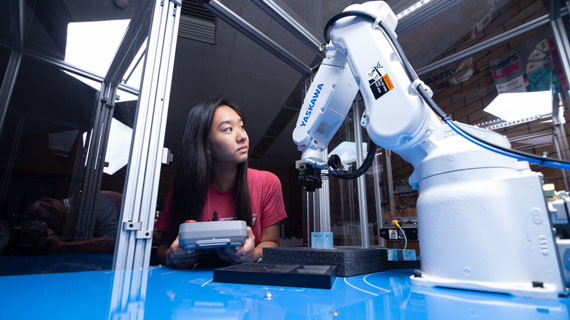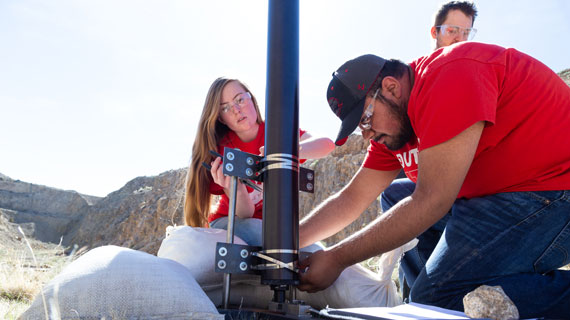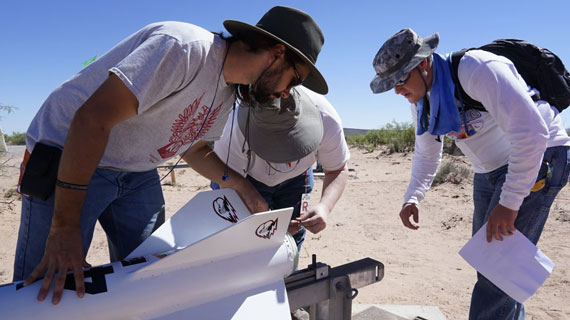2018 Spaceport America Cup - Aerospace Technology
With more than 99 teams from colleges and universities representing more than 12 countries, the 2018 Spaceport America Cup was the competition’s largest year to date. Designed around the Intercollegiate Rocket Engineering Competition for student rocketry teams from across the world, the IREC has held annual competitions since 2006. Students launch solid, liquid, and hybrid rockets to target altitudes of 10,000 and 30,000 feet. The RocketBirds, a Southern Utah University engineering student club, earned high honors this summer at the 2018 Spaceport America Cup placing fourth in the 10,000 foot Student Researched and Developed Motor category and ranked 26th out of 99 competing teams.Dr. Scott Munro, associate professor of engineering at Southern Utah University and specialist in aerospace technology and acoustics for rockets, missiles, and jet engines, leads the SUU Rocketbird club.“The RocketBirds placed well, particularly considering the size of our program and budget as compared to some of our competitors. For the past three years, we have put together rockets that are competing with the best schools in the country on a low budget and with a small team, comparatively.”SUU’s rocket was 75 pounds and 11.5 feet tall. The structure was constructed entirely from fiberglass and computer simulations were run to verify the rocket’s stability and performance during flight. It flew to an altitude of about 7,600 feet above ground level and flew as anticipated.The multi-discipline project included aerodynamics, structures, propulsion, electrical and testing operations. SUU students were split into several teams to construct their rocket, including propulsion, airframe, avionics, and payload. The rocket design revolved around the payload, which was a defined size. From there, the team determined how big the rocket needed to be.“These types of projects require long-term teamwork, time management, and budgeting. Companies that build or work with rockets see this competition as a great place to recruit new talent.”The Rocket Club is funded by a grant from the Utah Space Grant Consortium, department funding and funds from the Engineering Initiative.For more than 25 years, Dr. Scott Munro has been developing new aerospace technologies. His work has included test-cell acoustics, advanced resonant liner research, cutting torch technology, and jet and airframe noise. Dr. Munro is familiar with the media and available for an interview. Simply visit his profile.Source:








